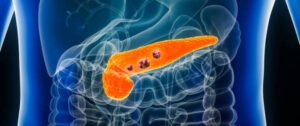
1/3 of Blood Cancers Are Like This! A Brief Discussion On the Causes, Symptoms, Treatment and Survival Rate of Acute Myeloid Leukemia
There are around 9,900 new leukaemia cases in the UK every year, that’s 27 every day (2016-2018). Leukaemia is the 12th most common cancer in the UK. Among them, acute myeloid leukemia (AML) has the highest proportion. Among AML patients, 11% do not receive treatment. Why is this? Is it because acute myeloid leukemia is untreatable? We explain to you the causes, symptoms, and related diagnosis and treatment of acute myelogenous leukemia.
What is acute myelogenous leukemia?
Acute myelogenous leukemia is caused by the canceration of bone marrow blast cells (or bone marrow bud cells) in the bone marrow, resulting in the proliferation of bud cells, which are so-called “immature white blood cells”. These white blood cells will occupy the bone marrow space and enter the blood circulation, causing the number of red blood cells, platelets and other cells to decrease.
Why do you get AML? Causes of acute myeloid leukemia
The causes of acute myeloid leukemia are mainly divided into the following three points:
- Developed from chronic myeloid leukemia.
- Some AML patients have gene mutations such as FLT3, c-KIT and RAS, which may be caused by chromosomal translocations (translocations), deletions, inversions or duplications.
- Other carcinogens include long-term exposure to chemicals such as benzene, smoking, family history of leukemia, exposure to radiation, genetic diseases (such as Down syndrome) and viral infections (such as HTLV-1).
There is a small correlation between AML and family history of leukemia. Men over 65 years old are a high-risk group for AML.
Classification of acute myeloid leukemia
M0: Acute poorly differentiated leukemia (Minimally differentiated leukemia)
M1: Acute immature myeloid blastoid leukemia
M2: Acute mature myeloid blastoid leukemia
M3: Acute premyelocytic leukemia
M4: acute myelomonocytic leukemia
M5: acute monocytic leukemia
M6: acute erythrocytic leukemia
M7: Acute megakaryocytic leukemia
Symptoms of acute myeloid leukemia
Common symptoms of leukemia include fever, night sweats, loss of appetite and inexplicable weight loss. However, the disease progression of AML patients is usually faster, which is conducive to early detection of patients. The changes in symptoms are mainly related to the following three points:
- Insufficient red blood cells: Patients have symptoms such as anemia, pale face, dizziness, difficulty or rapid breathing, headache and fatigue.
- Insufficient normal white blood cells: Although AML patients have a large number of immature white blood cells in their bodies, they do not have the function of normal white blood cells and frequently develop infections or fevers.
- Insufficient platelets: The patient’s coagulation function is reduced and prone to gum bleeding, nosebleeds, and spot or lump bleeding on the skin.
- Patients may also experience bone or joint pain, as in patients with chronic myelogenous leukemia, where abnormal accumulation of white blood cells in the liver or spleen causes abdominal bloating.
In rare cases, a large number of abnormal white blood cells may block blood vessels. If it occurs in the lungs, it will cause difficulty breathing; if it occurs in the eyes, it will affect vision.
Diagnostic Methods for Acute Myeloid Leukemia
Routine blood test (Complete blood count, CBC) can provide the values of red blood cells, white blood cells and platelets. If leukemia is suspected, bone marrow puncture will be further used to extract a very small amount of bone marrow fluid for smear examination to observe the differentiation of blood cells for diagnosis. What kind of leukemia it is and developing future treatment strategies.

Because AML is caused by abnormal proliferation of bud cells, it can often be detected during health checkups or other situations that require blood draws.
Treatment of acute myeloid leukemia
M3 AML has high cure rate
It is worth mentioning that patients with acute premyelocytic leukemia (APL or AMPL for short) can choose to use ATRA all-trans retinoic acid (or all-trans retinoic acid) in combination with arsenic trioxide when receiving differentiation induction therapy. (commonly known as arsenic). Up to 90% of patients will experience remission. The disadvantage is that it is easy to relapse as soon as the drug is stopped. Therefore, there are also courses of treatment with all-trans A acid in the early stage, and then traditional chemotherapy is used to reduce the recurrence rate.
The treatment policy for acute myeloid leukemia also depends on the age of the patient. Younger patients are more suitable for more aggressive treatment methods with recovery as the goal; the elderly mainly focus on controlling symptoms and improving quality of life.
Targeted drugs improve survival rates of elderly patients
Some patients with acute myeloid leukemia do not receive treatment. This may be because the patients believe that the cure rate of leukemia is not high and refuse treatment, or because the disease progresses rapidly and they die before receiving treatment, because the survival rate of AML patients without treatment may be only months.
In the past, there were few treatment options for acute myeloid leukemia except chemotherapy and bone marrow transplantation. However, high-intensity chemotherapy often poses a threat to elderly patients, so palliative care may sometimes be adopted to reduce the suffering of cancer patients.
However, there are currently many targeted drugs that can replace traditional chemotherapy with strong side effects and reduce the number of cancer cells in patients. If bone marrow transplantation is available, the patient’s survival rate will be significantly increased.
Acute myeloid leukemia prognosis and survival
Acute myeloid leukemia is a type of blood cancer with good remission rates. Basically, AML patients who receive induction therapy have a 60-70% chance of complete remission. However, remission does not mean that the leukemia will not relapse; because of this, during the subsequent consolidation chemotherapy, the survival rate for more than 3 years will be reduced to 20 ~30%; so it is better to receive a bone marrow transplant. If they receive bone marrow transplantation (preferably allogeneic bone marrow transplantation), more than 50% of patients have a survival rate of more than 5 years.













